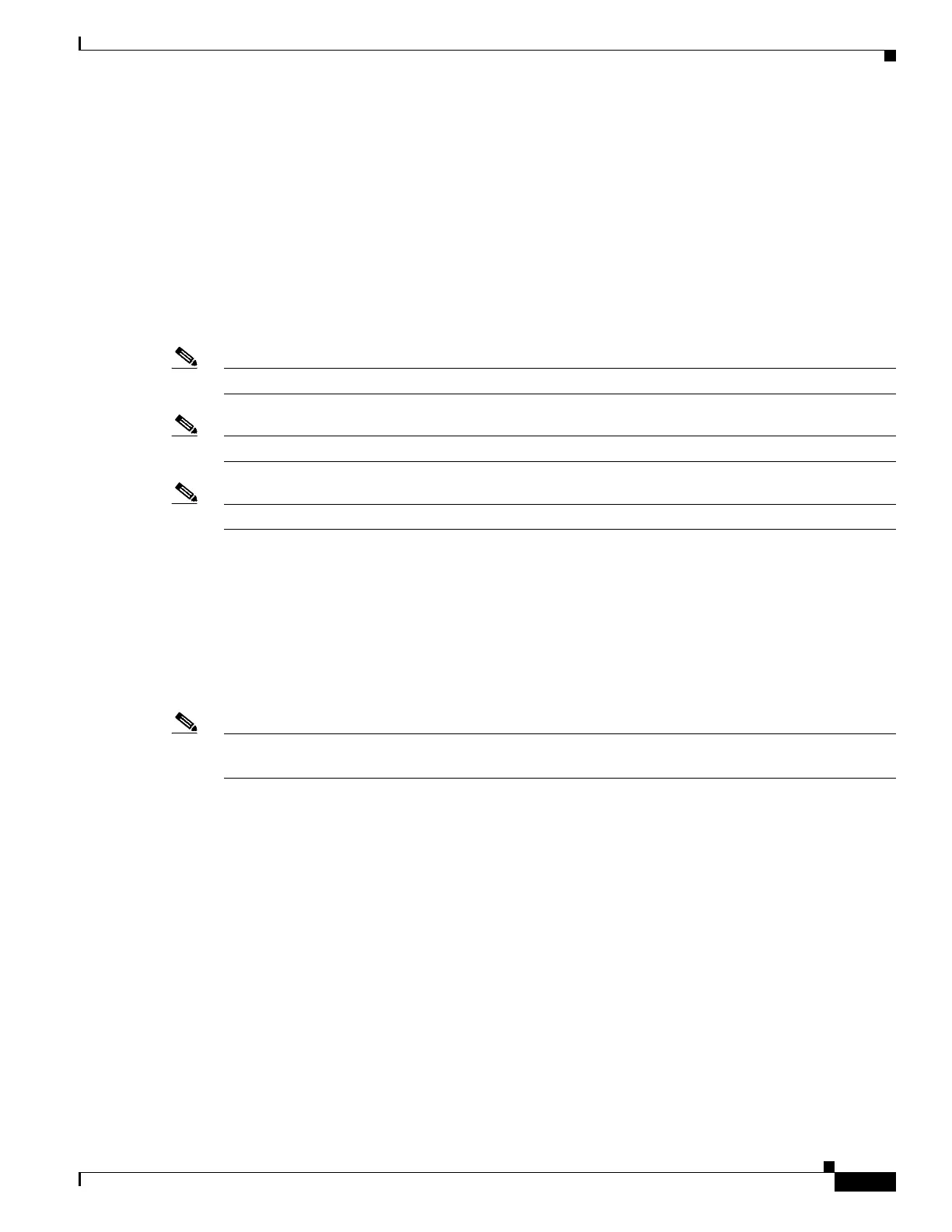1-21
Software Configuration Guide—Release IOS XE 3.6.0E and IOS 15.2(2)E
OL-30933-01
Chapter 1 Product Overview
Layer 3 Software Features
NSF with SSO
Non-Stop Forwarding with Stateful Switchover (NSF/SSO) offers continuous data packet forwarding in
a Layer 3 routing environment during supervisor engine switchover. During supervisor engine
switchover, NSF/SSO continues forwarding data packets along known routes while the routing protocol
information is recovered and validated, avoiding unnecessary route flaps and network instability. With
NSF/SSO, IP phone calls do not drop. NSF/SSO is supported for OSPF, BGP, EIGRP, IS-IS, and Cisco
Express Forwarding (CEF). NSF/SSO is typically deployed in the most critical parts of an enterprise or
service provider network, such as Layer 3 aggregation/core or a resilient Layer 3 wiring closet design.
It is an essential component of single chassis deployment for critical applications. NSF/SSO is available
for all shipping supervisor engines on Catalyst 4507R and 4510R chassis with supervisor redundancy.
Note With the IP Base image, NSF is supported with EIGRP-stub routing and OSPF.
Note With the Enterprise Services image, NSF is supported on all routing protocols except for RIP.
Note The LAN Base image does not support NSF.
For information on NSF with SSO, see Chapter 12, “Configuring Cisco NSF with SSO Supervisor
Engine Redundancy.”
OSPF for Routed Access
OSPF for Routed Access is designed specifically to enable customers to extend Layer 3 routing
capabilities to the access or wiring closet.
Note OSPF for Routed Access supports only one OSPFv2 and one OSPFv3 instance with a maximum number
of 1000 dynamically learned routes.
With the typical topology (hub and spoke) in a campus environment, where the wiring closets (spokes)
are connected to the distribution switch (hub) forwarding all nonlocal traffic to the distribution layer, the
wiring closet switch does not need to hold a complete routing table. Ideally, the distribution switch sends
a default route to the wiring closet switch to reach inter-area and external routes (OSPF stub or totally
stub area configuration).
Refer to the following link for more details:
http://www.cisco.com/en/US/docs/solutions/Enterprise/Campus/routed-ex.html
With Cisco IOS Release 12.2(53)SG, the IP Base image supports OSPF for routed access. The Enterprise
Services image is required if you need multiple OSPFv2 and OSPFv3 instances without route
restrictions. Enterprise Services also is required to enable the VRF-lite feature.

